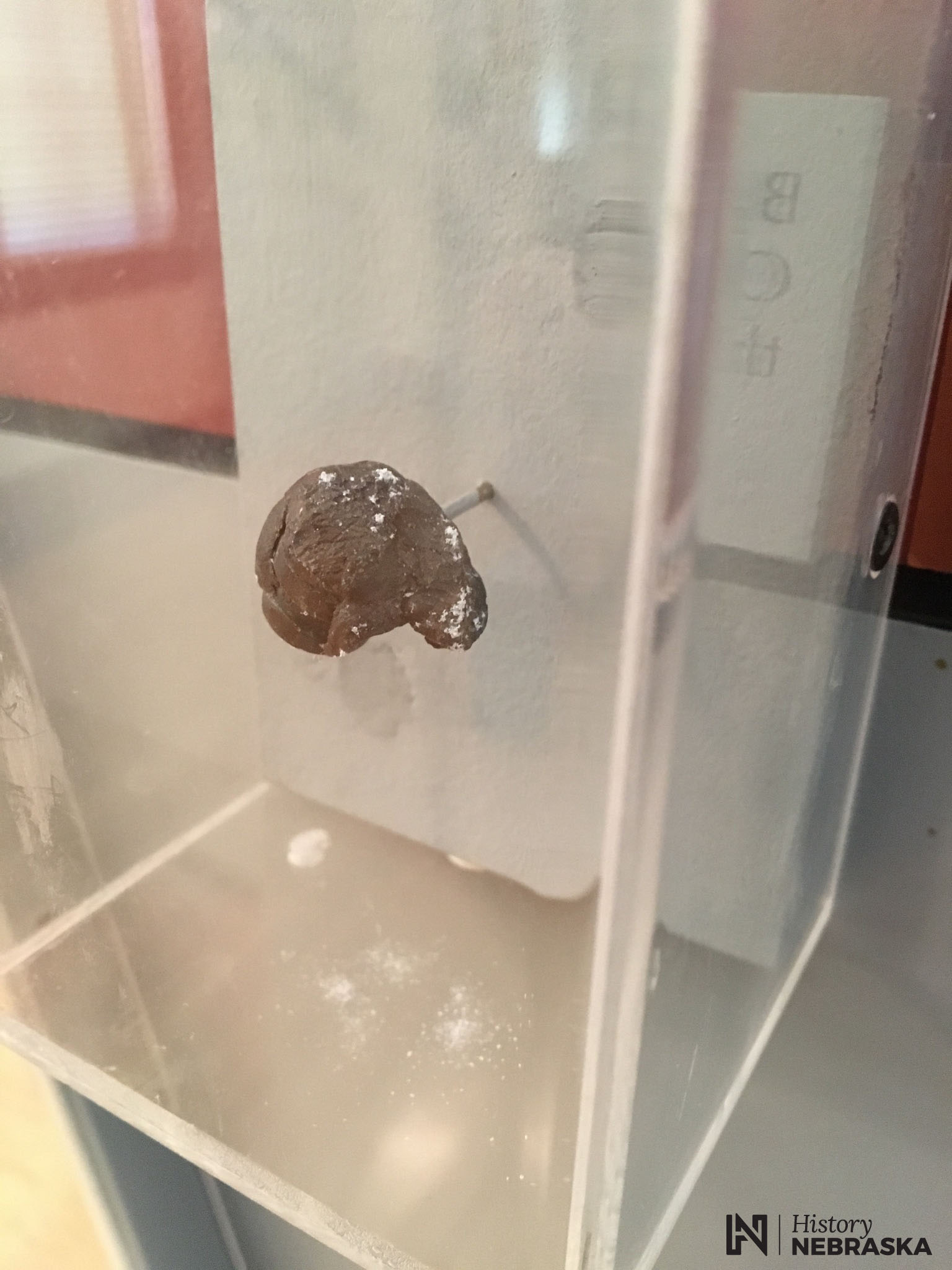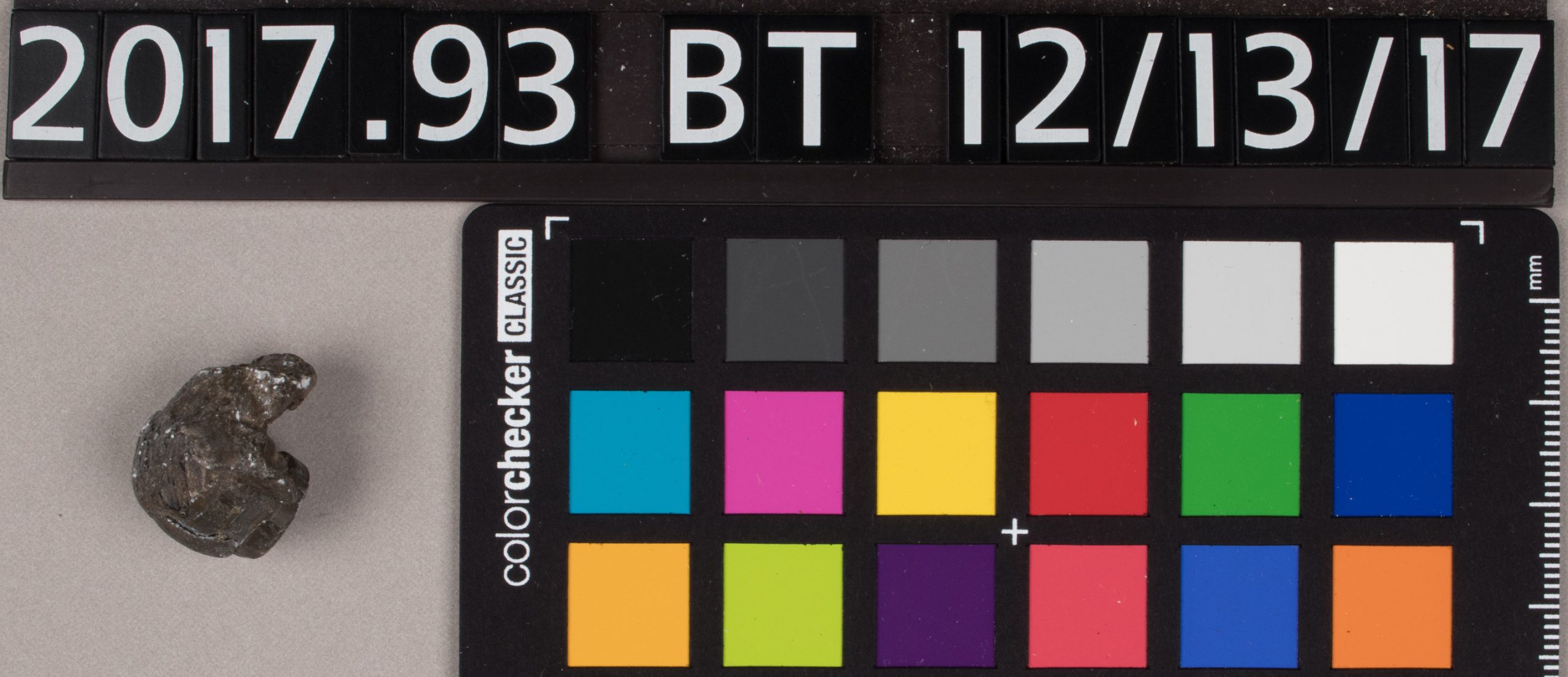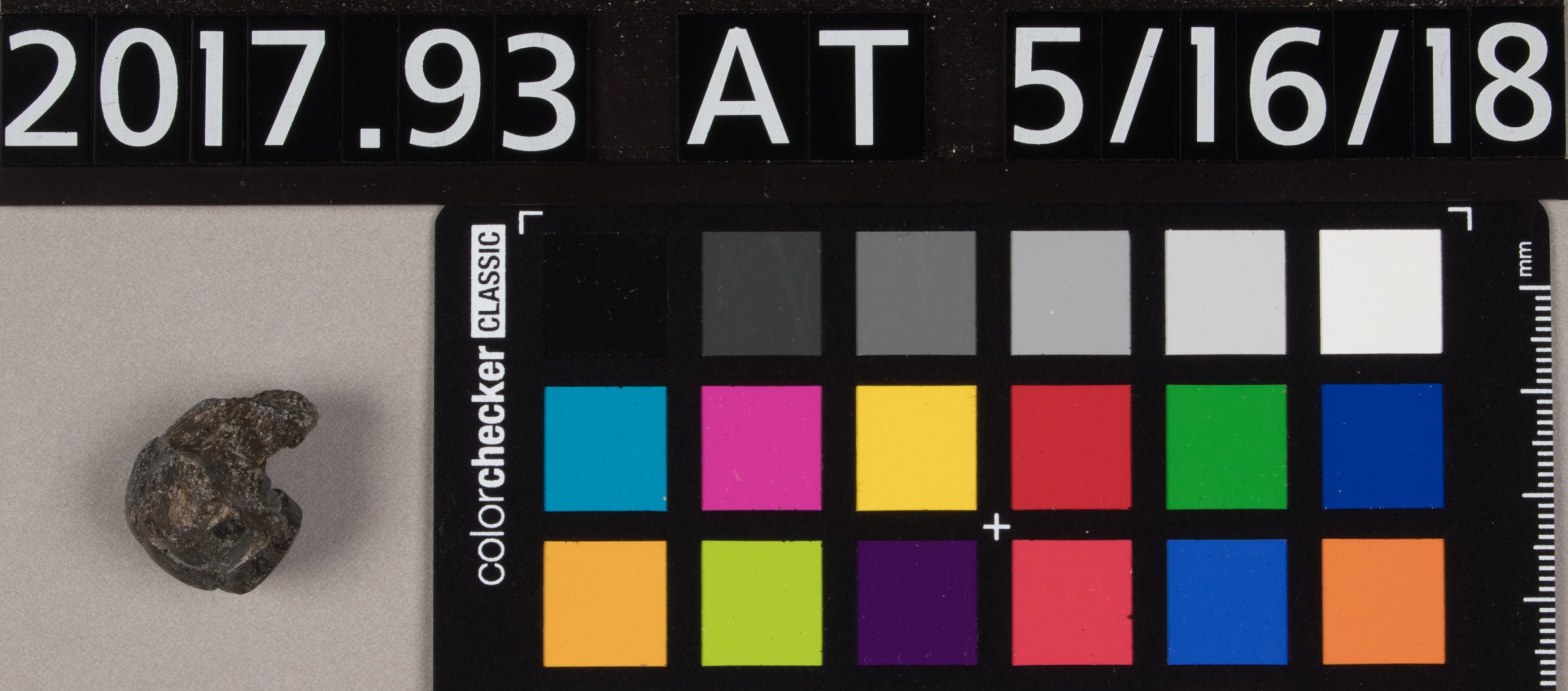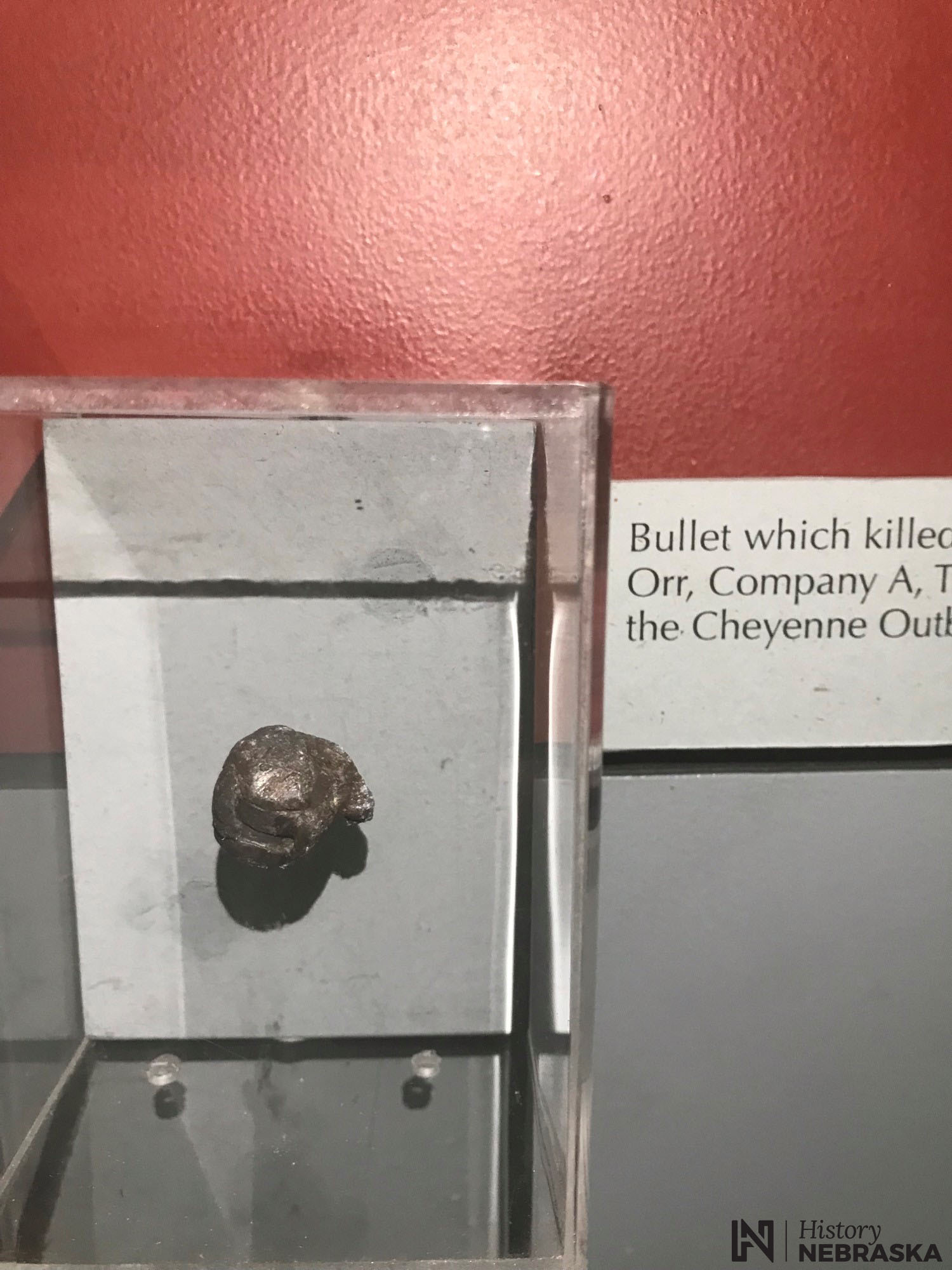Not all the objects we treat at the Ford Center are beautiful works of art. Some tell darker and more tragic tales of our nation’s past. The object described here is a carbine bullet that killed Corporal Henry P. Orr at Fort Robinson on January 11, 1879, during the Cheyenne Breakout near Fort Robinson, Nebraska.
The Northern Cheyenne had been forcibly removed from their homeland to a reservation in Oklahoma. Suffering from lack of food and disease and denied permission to return home, 350 Cheyennes left the reservation to return north. Making their way through Nebraska, they were eventually captured and taken into custody at Fort Robinson in western Nebraska. A total of 149 men, women and children arrived at the Fort on October 24, 1878. Initially allowed to leave the barracks during the day, by the end of December, the Cheyenne were prisoners and were denied food and fuel. On the night of January 9, 1879, the Cheyennes broke out and obtained the weapons they had hidden before their imprisonment. By the end of the fighting, sixty-four Native Americans and eleven soldiers lost their lives and eighty women and children were recaptured.
Orr, a member of Company A, 3rd Cavalry, stationed at Fort Robinson, was one of the eleven soldiers who died. Records indicate that the bullet passed through Orr’s heart and lungs, and was removed from the body and donated to the U.S. Armed Forces Institute of Pathology Medical Museum by Dr. E. B. Mosely, Assistant Surgeon. The front of the bullet is misshapen and distorted due to impact. The bullet was transferred to NSHS in 1957.

Photo of Bullet in Case with White Lead Corrosion Product Residue
While visiting Fort Robinson, History Nebraska director, Trevor Jones, noticed white corrosion products in the bullet’s display case. He took photos and sent them to the Ford Center staff to see what could be done.
Corrosion products present on the bullet appeared to have been the result of off-gassing exhibit case materials while the bullet was on display.

Before treatment photo of the bullet
Once at the Ford Center, the condition of the bullet was documented using digital images. The bullet was then lightly brushed overall to remove particulate matter and loose corrosion products, vacuum and a screen so the bullet would not get sucked into the vacuum.
Active corrosion products were reduced from the surface of the bullet under a microscope with a combination of a soft brush and a fine tipped pin.
The bullet was chemically dried and degreased before a thin coating of clear paste wax was applied to the surface to provide improved handling qualities and reduce corrosion formation.

After treatment photo of the bullet
After treatment photos were taken of the bullet and it was returned to Fort Robinson for display with recommendations that MicroChamber matboard be used to line the bottom of the display case in order to absorb acidic byproducts from the exhibit case.

The bullet back on display at Fort Robinson



